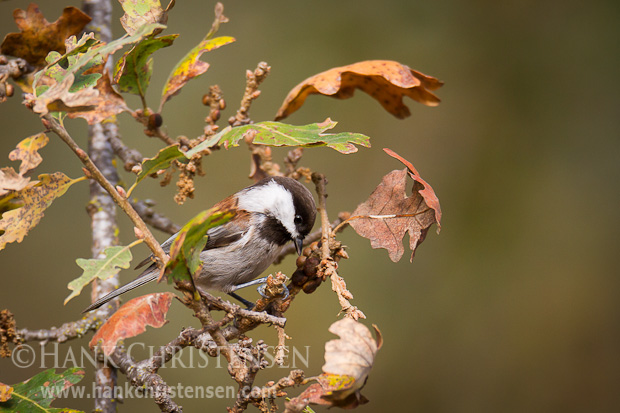
One of my favorite local passerines is the chestnut-backed chickadee. It is common enough to be seen semi-regularly, but just rare enough for those sightings to be special. Here is a photo I took last November, as the leaves were turning color on the trees. I love how the chickadee’s colors compliment the fall colors of nature.
Another reason that I enjoy chickadee sightings is that I always think of them as “bonus” birds. I never set out to specifically find one of these guys (if I did so, I’d probably be searching for days). Usually I’ll go looking for a different target species (be it a shorebird rarity, newly hatched chicks, etc) and only after I successfully (or unsuccessfully) photograph my target do I look around to see who else is present. And that’s when a chickadee might show up.
The biggest challenges in photographing birds like this are their size and speed. They are a relatively small bird. When working with a large lens (as I normally do for birds), that means working at or less than the lens’s minimum focusing distance. That also means that finding your subject at that magnification is like finding a needle in a haystack! And the speed? The only time this bird sits still is when it stops to sing. Otherwise it is flitting from branch to branch – very hard to track with a long lens. Here patience and practice (and some times a little luck) pay off.
